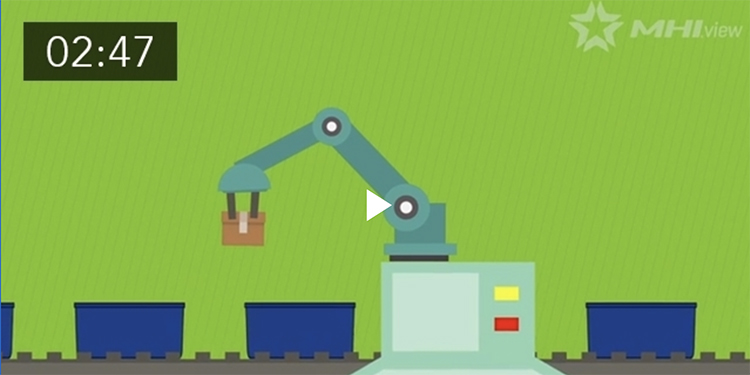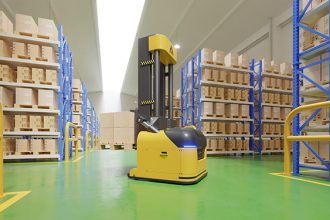Think Robotics Is Out Of Reach For Small And Mid-Sized Facilities? Think Again

As more consumers turn to online shopping, they’re also expecting more variety in the types of merchandise available. Thanks to the “Amazon effect,” customers also expect shorter delivery times, fast order fulfillment, and consistent product availability as they shop for individual items — a well-documented shift over the past few years.
Whereas large manufacturers and distributors can easily afford to leverage large scale, fully-automated solutions to support the increased demand for each picking, small and mid-sized operations have typically been forced to add labor. Yet, as the labor pool shrinks and wages rise, this strategy has become less feasible. As an alternative, modular robotic solutions offer smaller facilities the opportunity to more affordably supplement their human workforce, as explored in a recent MHI View video, “Deploying Robots in Small to Medium Facilities.”
Solutions overviewed in the video include automated vehicles, sortation systems, and piece picking robots. All of these technologies can be deployed to help these smaller operations adapt their traditional processes and systems to address the challenges of transitioning from case to each picking.
Thanks to advances in machine vision and sensor technologies, machine learning, grasping end effectors, and an overall decrease in the costs of these solutions, smaller operations can now more easily and affordably implement them. Piece picking robots can be integrated into a system one at a time and redeployed quickly with minimal programming to accommodate high mix, low volume inventory when demand changes. As the operation becomes more familiar with the technology, workers can transition from performing tasks alongside robotic solutions to managing multiple robots in a fleet.
To ensure the most effective implementation of a robotic system within a small to medium sized facility, the video advises working closely with a solution provider to identify which tasks can be shifted from the human workforce to a robotic workforce. These are typically simple, repetitive tasks that can be matched by a robot with a desired rate, range, and reliability profile. Conversely, more value-added tasks should be assigned to a human worker — such as verifying quality and handling exceptions to products prior to them passing into the next stage of the fulfillment process — as current robotic solutions are unable to perform such functions.
For more information about deploying robots in small to mid-sized warehouse and distribution center operations, watch the video.



